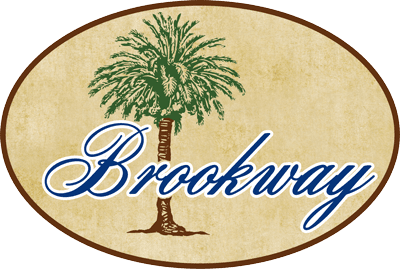Texas commercial properties are experiencing a landscaping revolution driven by rising water costs, unpredictable weather, and changing tenant expectations. Property managers who understand these shifts can reduce costs while creating attractive spaces that boost property value.
The commercial landscaping trends in Texas 2025 reflect a move toward smarter, more resilient outdoor environments. These changes aren’t just about looks, they’re about creating functional spaces that work with the Texas climate rather than against it.
Why Landscaping Looks Different for Texas Commercial Properties in 2025
Many major cities in Texas have introduced stricter water rules, and some have made conservation part of their long-term plans. As extreme weather continues to challenge traditional landscaping, tenants now expect more eco-friendly outdoor spaces.
The sustainable landscaping movement in Texas is gaining real momentum. More businesses are seeing the financial and environmental benefits of low-maintenance, resource-smart design.
Read More: Top 5 Commercial Landscaping Challenges in Houston
Trend 1: Sustainability Takes Center Stage

Sustainable landscaping focuses on saving water, keeping soil healthy, reducing waste, and helping local plants and animals. Many businesses now use recycled materials for hardscaping, apply natural fertilizers, and design landscapes that manage rainwater naturally.
This eco-friendly landscaping includes features like bioswales that clean water by filtering pollutants, surfaces that let water soak into the ground to prevent flooding, and native plants that provide homes for local wildlife. These green upgrades can also help properties earn LEED certification and qualify for government rewards.
Properties that invest in these sustainability features usually spend 20 to 30 percent less on maintenance and have happier tenants who stay longer compared to traditional landscaping.
Trend 2 Drought-Tolerant Landscaping & Water Conservation
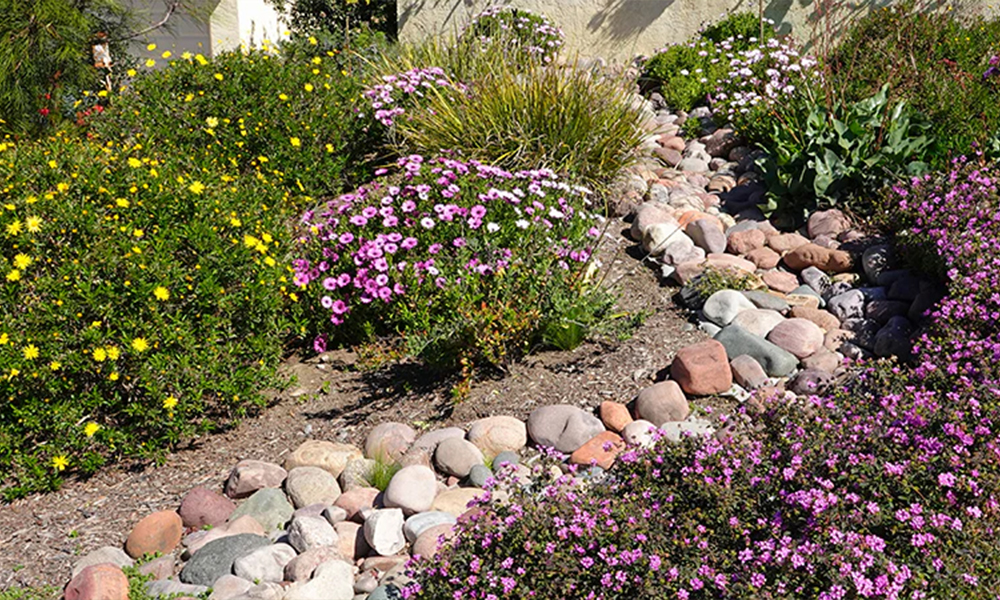
Drought-tolerant landscaping has changed from being just an emergency fix to a common way of landscaping commercial properties in Texas. This method uses careful plant choices and smart design to create beautiful spaces that need very little water.
Xeriscaping is an important part of this approach. It groups plants that use water efficiently, sets up irrigation zones to save water, and improves soil to hold moisture better. These smart methods can reduce water use by 40 to 60 percent compared to regular landscaping.
The drought-tolerant plants used in Texas can handle the heat while still looking good all year. Some popular plants are Turk’s Cap for shady spots, Flame Leaf Sumac for bright fall colors, and Esperanza, which blooms with yellow flowers most of the year with little care.
These plants have deep roots that reach groundwater, so they need less watering and stay strong during dry times.
Trend 3: Smart Irrigation Systems & Technology Integration
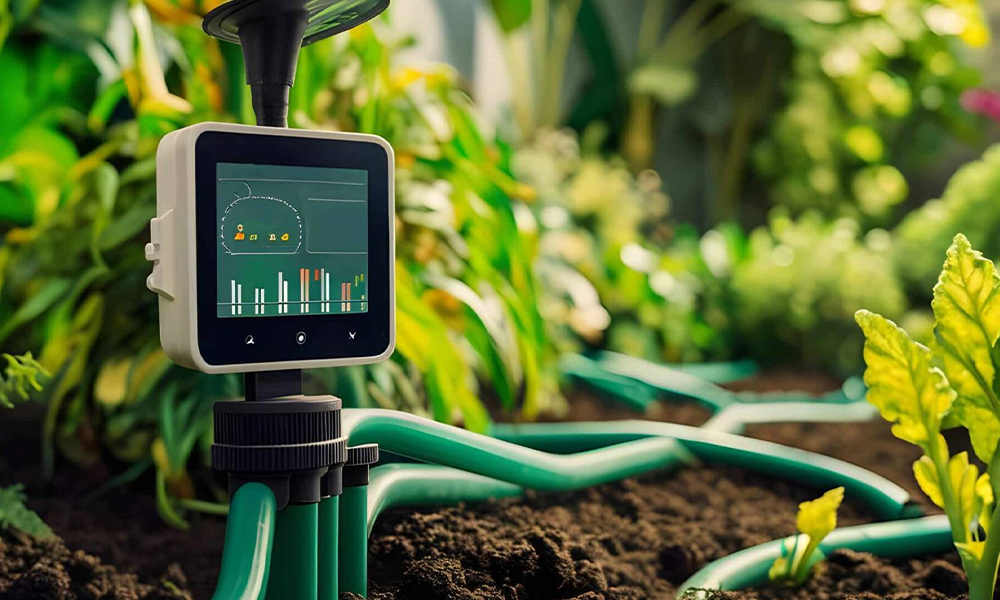
Smart irrigation systems are changing how water is used by using precise technology and data to make better decisions. These systems combine weather forecasts, soil checks, and the specific needs of plants to use water in the most efficient way.
Modern irrigation tools include sensors that measure how much water plants need by looking at temperature, humidity, and wind. They also have flow monitors that find leaks right away, stopping water waste and costly repairs.
With remote controls, facility managers can change watering schedules from anywhere and get alerts about how the system is working or if it needs fixing. Using these smart systems can reduce water use by 30 to 50 percent and help plants grow healthier.
Businesses that use smart irrigation often save between $8,000 and $15,000 a year on water bills, and they usually recover the system cost within three years.
Trend 4: Outdoor Workspaces & Gathering Areas

More Texas businesses are creating modern outdoor office spaces, changing how commercial properties are designed. These outdoor areas act like extensions of indoor offices, giving employees fresh air and natural sunlight.
Good outdoor workspaces include comfort features like misting systems, shade covers, and cooling fans so people can use them even in hot summer months. They also have weatherproof power outlets and strong Wi-Fi to keep things running smoothly.
These spaces often have covered pavilions with ceiling fans, walking paths with fitness stations, outdoor meeting spots with weather-safe tech, and garden areas where employees can help grow plants.
Properties with well-planned outdoor workspaces usually charge 8 to 12 percent higher rent and have fewer tenants moving out.
Trend 5: Low-Maintenance, High-Impact Landscape Design
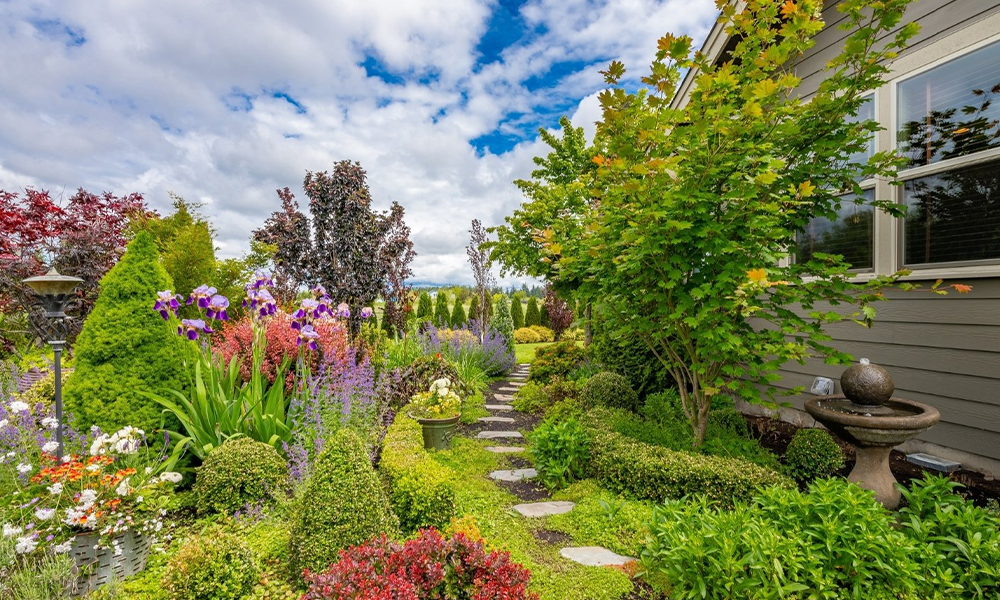
Commercial garden design is moving toward landscapes that look great but need very little ongoing care. This style uses smart plant choices and design features that lower work and cost.
In Texas, native plants are the key to low-maintenance landscaping. These plants have adapted to local weather and soil, so they need less water and care. They also naturally resist pests and grow well with the natural rain.
Important design parts include grouping plants that come back every year without needing to be replanted, using mulch to stop weeds and keep soil moist, drip irrigation that waters the roots directly, and slow-release organic fertilizers that feed plants over time.
Properties that use low-maintenance landscaping save 40 to 60 percent on labor costs while keeping their outdoor spaces attractive all year long.
Trend 6: Enhanced Landscape Lighting
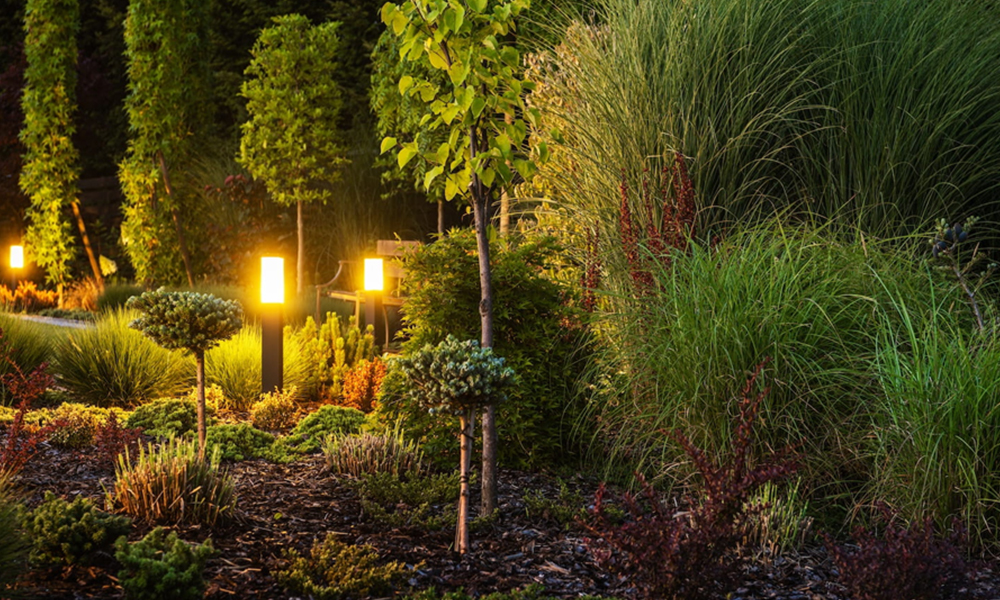
Strategic lighting is now important for making commercial properties look better. It also helps people use outdoor spaces longer and improves safety. Modern LED lights are energy-efficient and more affordable than before.
Good lighting design uses layers of light to show off building features, guide people safely, and create a welcoming feel. Solar-powered lights can lower installation costs and don’t need constant electricity.
Popular lighting choices include path lights for safety and direction, uplights to brighten trees and buildings, security lights that keep places safe while looking nice, and decorative lights that give properties a unique style.
Well-planned lighting can increase property value by 5 to 8 percent and help reduce crime and insurance costs.
Trend 7: Vertical Gardens and Space-Saving Solutions
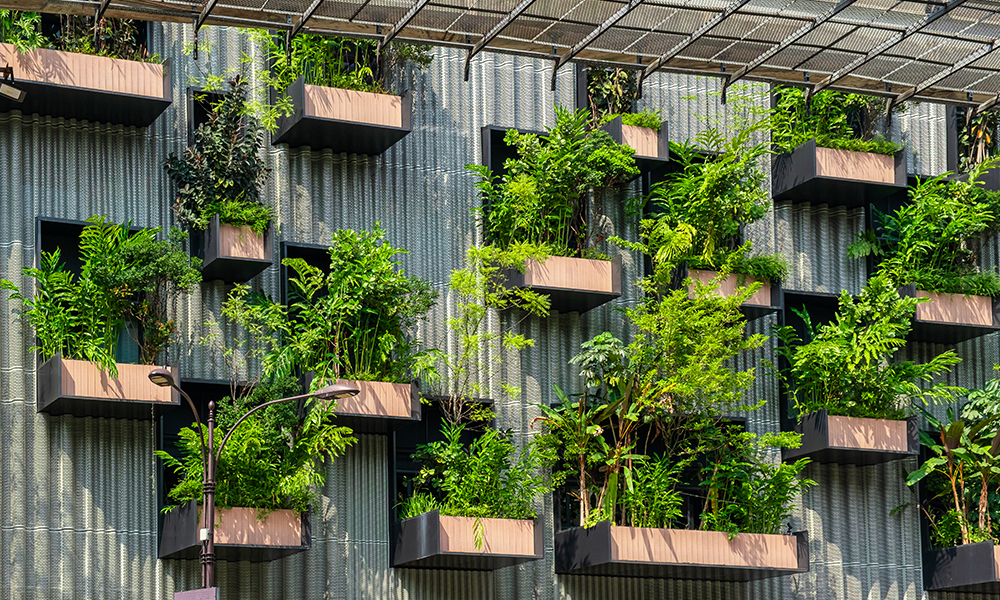
Limited space is inspiring new ideas in commercial garden design, like vertical gardens that make the most of small areas. These gardens create eye-catching features while using space wisely.
Living walls have built-in watering and fertilizing systems, which makes them easy for property managers to care for. Their modular design lets plants be changed with the seasons or replaced easily.
Vertical gardens can be used as entrance walls to make a strong first impression, in courtyards to bring nature into tight spaces, on rooftops to use unused areas, and on balconies to add greenery for tenants above ground level.
These vertical gardens often cost less than expanding ground-level landscaping but provide more visual appeal and make tenants happier.
Trend 8: Native and Pollinator-Friendly Planting
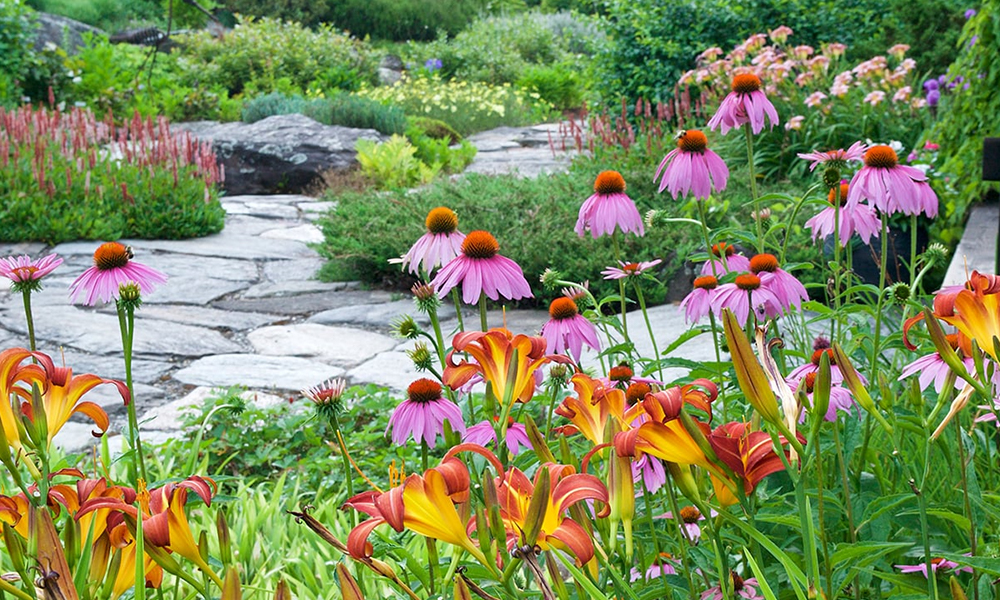
Using native plants in Texas landscaping helps local wildlife and lowers the need for upkeep and chemicals. These plants create homes for helpful insects, birds, and other animals that keep nature balanced.
Pollinator gardens with native flowers support bees, whose numbers are dropping, while adding changing colors and textures throughout the year. Because these plants and insects have grown together, they need less fertilizer and pest control.
The benefits include using fewer chemicals, needing less water since the plants are adapted to the climate, having colorful plants that change with the seasons, and offering learning chances for tenants and visitors.
Properties with native plants often qualify for environmental awards and city programs.
Trend 9: Eco-Conscious Building Design and Exterior Upgrades

Green building upgrades are becoming common for Texas commercial properties that want environmental certifications and to save on running costs. These improvements often qualify for tax breaks and utility rebates.
Sustainable features include paving that lets rainwater soak into the ground to reduce runoff, systems that collect rainwater for watering plants, cool roofing materials that lower energy use, and native soil additives that help plants stay healthy and keep water longer.
These upgrades usually increase property value and lower long-term costs by cutting utility bills and reducing maintenance.
Trend 10: Maximizing ROI Through Strategic Landscaping
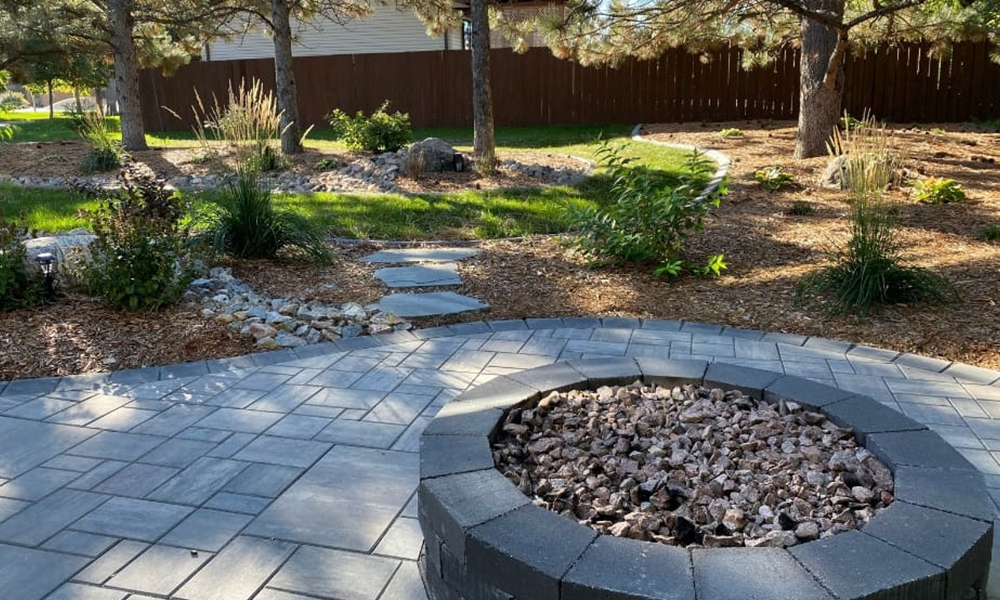
To get good returns from landscaping, businesses need to plan carefully, balancing the initial costs with long-term savings. Professional landscape design can boost property value, lower operating costs, and make tenants happier.
The main ways landscaping improves returns include increasing property value by 10 to 15 percent, cutting costs with smart irrigation and easy-care plants, charging higher rent for attractive outdoor spaces, and keeping tenants longer to avoid empty units and reduce turnover expenses.
To get the best results, it’s important to work with experienced professionals who know both good design and business goals.
Make Your Houston Yard Look Amazing with Brookway
Want a beautiful yard that everyone will love? Brookway is here to help! We do all kinds of landscaping work in Houston, TX, from mowing lawns to planting flowers and adding pretty lights.
Our team knows how to make your outdoor space look great while saving water and keeping plants healthy. We use smart ideas that keep your yard green and easy to care for.
Many Houston people trust Brookway because we work hard, finish on time, and do not charge too much. Call us today for a free talk about how we can make your yard the best on the block!
Final Thoughts: What’s Next for Commercial Landscaping in Texas
The commercial landscaping trends in Texas for 2025 show a big change toward smarter and more eco-friendly outdoor spaces. These changes happen because businesses’ needs, environmental challenges, and new technologies are all evolving.
Properties that follow these trends will gain advantages like lower costs, higher property values, and happier tenants. Those who stick to old ways may face higher expenses and lose their edge.
The future of Texas commercial landscaping focuses on being strong, sustainable, and using technology. To succeed, it’s important to know these trends and use them wisely to meet both environmental and business goals.
Work with skilled professionals to update your commercial landscaping for 2025. Expert design can help raise your property’s value and reduce operating costs.
Frequently Asked Questions
What is the landscaping trend in 2025? Expand
In 2025, landscaping is all about saving water, using smart technology, and going green. Drought-friendly plants and smart irrigation systems are becoming popular in Texas.
What kind of landscaping adds the most value? Expand
Using native Texas plants, smart watering systems, and good outdoor lighting can help increase property value by 10 to 15 percent.
How can I make my commercial landscape more eco-friendly? Expand
Choose local plants, water-saving irrigation systems, and sustainable materials. Pick low-maintenance, drought-resistant greenery that uses less water.
What is the future of landscaping in Texas? Expand
Texas landscaping will focus on dealing with dry weather, saving water, and creating modern outdoor workspaces. Xeriscaping (a low-water landscaping method) will play a big role.
Read More: How HOA Landscape Maintenance Boost Property Value in Texas

